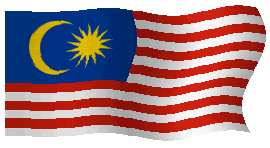
Airplane Parts Definition And Function ( Part 8 ) - Spoilers

Spoilers are small, hinged plates on the top portion of wings. Spoilers can be used to slow an aircraft, or to make an aircraft descend, if they are deployed on both wings. Spoilers can also be used to generate a rolling motion for an aircraft, if they are deployed on only one wing. This slide shows what happens when the pilot only deflects the spoiler on the right wing.
Spoilers Deployed on Both Wings
When the pilot activates the spoilers, the plates flip up into the air stream. The flow over the wing is disturbed by the spoiler, the drag of the wing is increased, and the lift is decreased. Spoilers can be used to "dump" lift and make the airplane descend; or they can be used to slow the airplane down as it prepares to land. When the airplane lands on the runway, the pilot usually brings up the spoilers to kill the lift, keep the plane on the ground, and make the brakes work more efficiently. The friction force between the tires and the runway depends on the "normal" force, which is the weight minus the lift. The lower the lift, the better the brakes work. The additional drag of the spoilers also slows the plane down.
Spoiler Deployed on Only One Wing
A single spoiler is used to bank the aircraft; to cause one wing tip to move up and the other wing tip to move down. The banking creates an unbalanced side force component of the large wing lift force which causes the aircraft's flight path to curve. (Airplanes turn because of banking, not because of the force generated by the rudder.
On the figure, the airplane's right wing spoiler is deployed, while the left wing spoiler is stored flat against the wing surface (as viewed from the rear of the airplane). The flow over the right wing will be disturbed by the spoiler, the drag of this wing will be increased, and the lift will decrease relative to the left wing. The lift force (F) is applied at the center of pressure of the segment of the wing containing the spoiler. This location is some distance (L) from the aircraft center of gravity which creates a torque
T = F * L
about the center of gravity. The net torque causes the aircraft to rotate about its center of gravity. The resulting motion will roll the aircraft to the right (clockwise) as viewed from the rear. If the pilot reverses the spoiler deflections (right spoiler flat and left spoiler up) the aircraft will roll in the opposite direction. We have chosen to name the left wing and right wing based on a view from the back of the aircraft towards the nose, because that is the direction in which the pilot is looking.







































0 comments:
Post a Comment